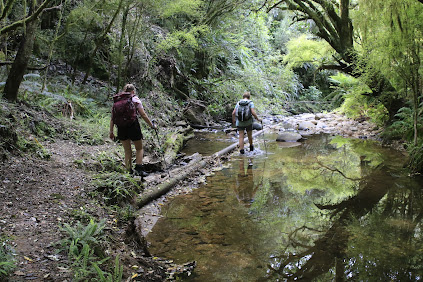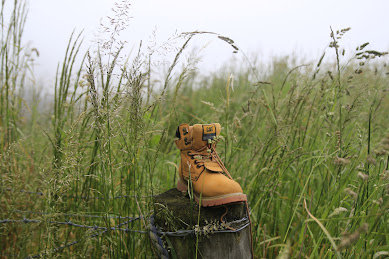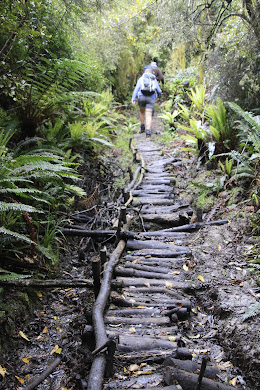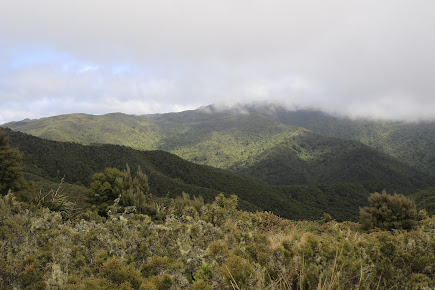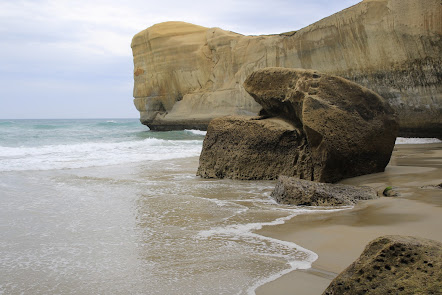After our first attempt at this trip in December last year was postponed due to inclement weather, we had our fingers and toes crossed that the 7th of January would be kinder to us. Heading into the first week of 2023 we had fantastic weather - days on end filled with blue skies and warm temperatures, until… the day before the trip, thunderstorms rumbled across the city, pelting us with heavy rain and once again we thought the trip would be rained off. Waking up on the 7th we anxiously peered out the window and were pleasantly surprised to see the weather had cleared, the trip was on!
This was a special trip for us as it was in our ‘backyard’, the meeting point was a 2 minute walk down the road at the intersection of Campbells and Pine Hill Road. We meandered down the road and, despite being 20 minutes early, were delighted to see people were already starting to arrive. By the time the trip was ready to depart at 11am, a staggering 22 people had gathered, perhaps an OTMC record for a day trip in early January?
It was a speedy trip up the hill to the end of the paved part of Campbells Road, with groups happily chatting away and catching up on what everyone has been up to over the break. Layers were soon being stripped off as the weather was warmer than expected after yesterday's downpour. One local must have been amazed to see such a tribe walking up the ‘dead end’ road and stopped to find out what we were up to.

With warnings of a bull that was supposedly roaming the paddocks we intended to cross ringing in our ears, we bravely opened the gate and entered the paddock anyway. While this section of the track appeared to be traversing a farmers paddock, we were actually on a Paper Road. These are unformed roads, often on what appears to be private property, however are recognised as legal roads and members of the public have the right to access these without having to gain permission from landowners. We followed the Paper Road (an extension of the formed Campbells Road) through the paddocks, on high alert for any possible sightings of a rogue bull, although to our relief the only livestock we found evidence of were sheep

After dodging the muddy bogs of the paddock we arrived at the bush which marked the beginning of the Mount Cargill Scenic Reserve. This section of track was certainly more interesting, however the slippery mud made for slow going. A few of us took a tumble, although thankfully the only wounds were to people's dignities. Being a section of bush that is not commonly visited, we were able to appreciate the true beauty of New Zealand bush. It was so vibrant and lush with rays of sunlight peeking through the thick bush, highlighting the endless shades of green which makes the NZ bush so magical.
Before long we arrived at the junction of the Bethunes Gully - Mount Cargill track and with our tummies starting to rumble for lunch, we set off at a brisk pace down the well-maintained track towards Bethunes Gully. The scenery soon started to change as we made our way through the pine forest and eventually to the open fields of Bethunes Gully. Lunch was quickly consumed, the obligatory team photo taken and packs were back on for the final ascent back up to Pine Hill.
The weather was really starting to heat up as we headed along North Road, happily chatting away in small groups. A quick pit stop was made to rehydrate before the slog up Watts Road. The section walking up the road was steeper than expected, and the speedy pace we had maintained for the rest of the trip was soon replaced as we plodded up the hill. We gained height quickly and by the time we reached the end of the tarseal we had quite a good view down into North East Valley and across to Ōpoho.

The end of the tarseal marked the beginning of another Paper Road, straight up the paddock to join up with Abbeyhill Road in Pine Hill. After negotiating our way up a scrambly bank and over a couple of fences, we were met by some power poles which indicated we were not far from our destination. Sticking to the fence line, it was a straightforward climb up the hill, although thankfully the gradient was not as steep as it had been on the road. We stopped to admire a set of old rugby posts, dreaming of days gone by when games would have been played perched on the side of the hill.
Before we knew it, we were clambering over the stile and onto Abbeyhill Road. A quick head count and it was soon confirmed that all 22 of us had made it safely back up the hill. While the majority of the group made its way back down the hill to the starting point, we said our goodbyes at the end of our street and headed home for a well-deserved cold drink.
Trip #20 ticked off the 100 Trips list, and what a fantastic trip in our backyard it was. The OTC used Campbells Road to access Bethunes Gully in the 1930’s, and it was great to put our own spin on this to create a loop trip in an area not usually frequented by the club but certainly well worth the visit. In total we were away for about 3 ½ hours (including lunch) and walked about 8km.
Written by Jade Pettinger























